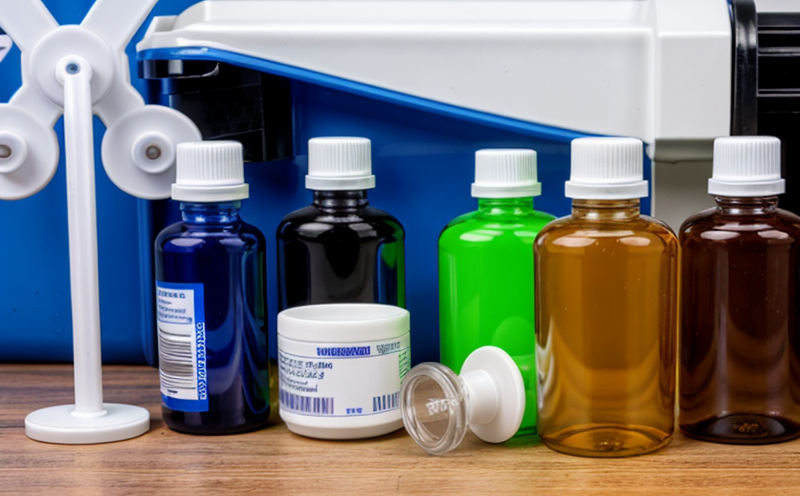ASTM D8295 PFAS Compounds in Medical Waste
The presence of per- and polyfluoroalkyl substances (PFAS) in waste streams has become a significant concern due to their environmental persistence, bioaccumulation potential, and toxicity. These compounds are widely used in various industries including medical and pharmaceutical sectors for the manufacturing of products such as intravenous fluids, blood bags, catheters, and packaging materials.
The American Society for Testing and Materials (ASTM) has developed Standard Test Method D8295 to determine the concentration levels of PFAS compounds in medical waste. This standard method provides a robust framework for laboratories to accurately measure and report the presence of PFAS in various types of medical waste, ensuring compliance with environmental regulations.
The ASTM D8295 test is particularly relevant for quality managers and R&D engineers who need to ensure that their products comply with strict regulatory standards. By using this method, companies can verify that their processes do not inadvertently introduce harmful PFAS compounds into the environment. For procurement officers, understanding the implications of PFAS in waste streams helps them make informed decisions regarding suppliers and material choices.
The test protocol involves several critical steps to ensure accurate measurement:
- Sample collection must be done following strict guidelines to prevent contamination.
- Pre-treatment processes may include dilution or concentration techniques depending on the sample composition.
- Solid samples are typically extracted using a solvent-based method, while liquid samples undergo direct analysis without extraction.
- The analyzed extract is then injected into an analytical instrument capable of detecting PFAS compounds at trace levels.
Once the analysis is complete, results are reported according to ASTM D8295 requirements. Compliance with this standard ensures that laboratories provide reliable data on PFAS concentrations in medical waste, which can be used for environmental impact assessments and regulatory submissions.
The importance of ASTM D8295 cannot be overstated, especially given the increasing scrutiny on PFAS contamination. Regulatory bodies worldwide are implementing stricter guidelines to reduce PFAS emissions into the environment. By adhering to this standard, laboratories demonstrate their commitment to sustainability and public health.
Scope and Methodology
The ASTM D8295 scope encompasses the determination of per- and polyfluoroalkyl substances in various types of medical waste. The methodology is designed to be adaptable, allowing for adjustments based on specific sample characteristics or regulatory requirements.
The testing process involves several key steps:
- Sample Collection: Samples are collected from different parts of the facility where medical waste is generated and stored. Care must be taken to ensure that samples represent a true cross-section of the overall waste stream.
- Pre-treatment: Depending on the type and nature of the sample, pre-treatment steps such as dilution or concentration may be necessary before analysis.
- Solid Sample Extraction: For solid samples, extraction is typically performed using a solvent-based method. The choice of solvent depends on the specific PFAS compounds being targeted.
- Liquid Sample Analysis: Liquid samples are analyzed directly without prior extraction. This simplifies the process and reduces potential contamination risks.
- Analytical Instrumentation: High-performance liquid chromatography coupled with tandem mass spectrometry (HPLC-MS/MS) is commonly used for accurate detection of PFAS compounds.
The methodology outlined in ASTM D8295 ensures that the results are reliable and repeatable, providing a clear picture of the PFAS content in medical waste. This information is crucial for compliance with environmental regulations and can inform process improvements to minimize PFAS emissions.
Why Choose This Test
Selecting ASTM D8295 as your method for determining PFAS compounds in medical waste offers numerous advantages, particularly for those responsible for maintaining regulatory compliance and ensuring product quality.
Compliance with Regulatory Standards: By using ASTM D8295, laboratories can provide data that meets the stringent requirements set by environmental agencies. This is essential for avoiding penalties and ensuring long-term sustainability.
Accurate Results: The standardized procedure ensures that results are consistent across different laboratories, providing a reliable benchmark for decision-making. This accuracy is critical in industries where precision matters, such as medical and pharmaceutical waste management.
Environmental Impact Assessment: Understanding PFAS concentrations allows companies to assess the environmental impact of their operations. This knowledge can guide efforts to reduce emissions and implement cleaner processes.
Risk Management: Early detection of PFAS in waste streams enables proactive risk management strategies, reducing the likelihood of accidental contamination or non-compliance incidents.
Sustainability Initiatives: Companies committed to sustainability initiatives can use ASTM D8295 results to track progress and set targets for reducing PFAS emissions. This aligns with broader corporate goals and enhances brand reputation.
Customer Confidence: Demonstrating compliance with recognized standards like ASTM D8295 builds trust with customers, regulatory bodies, and the public. This transparency can lead to stronger business relationships and increased market share.
Quality and Reliability Assurance
The quality of PFAS testing results is paramount in ensuring accurate assessment of medical waste. To maintain high standards, laboratories must implement robust quality control measures throughout the testing process.
Laboratory Accreditation: Ensuring that the laboratory conducting ASTM D8295 tests is accredited by recognized bodies such as ISO/IEC 17025 guarantees adherence to international best practices. This accreditation verifies that the lab has the necessary expertise, equipment, and procedures in place.
Standard Operating Procedures: Strict adherence to standard operating procedures (SOPs) is crucial for consistent results. SOPs outline every step of the testing process, from sample collection to final analysis, ensuring that all tests are conducted uniformly.
Calibration and Maintenance: Regular calibration of analytical instruments ensures accurate measurements. Routine maintenance schedules prevent equipment malfunctions that could lead to errors in test results.
Data Validation: Rigorous data validation processes check the accuracy and reliability of all recorded data before final reports are issued. This includes cross-checking with previous tests and independent verification where possible.
Continuous Improvement: Laboratories committed to quality continuously review their methods and procedures, adopting new technologies and techniques as they become available. This commitment ensures that results remain accurate and relevant over time.





